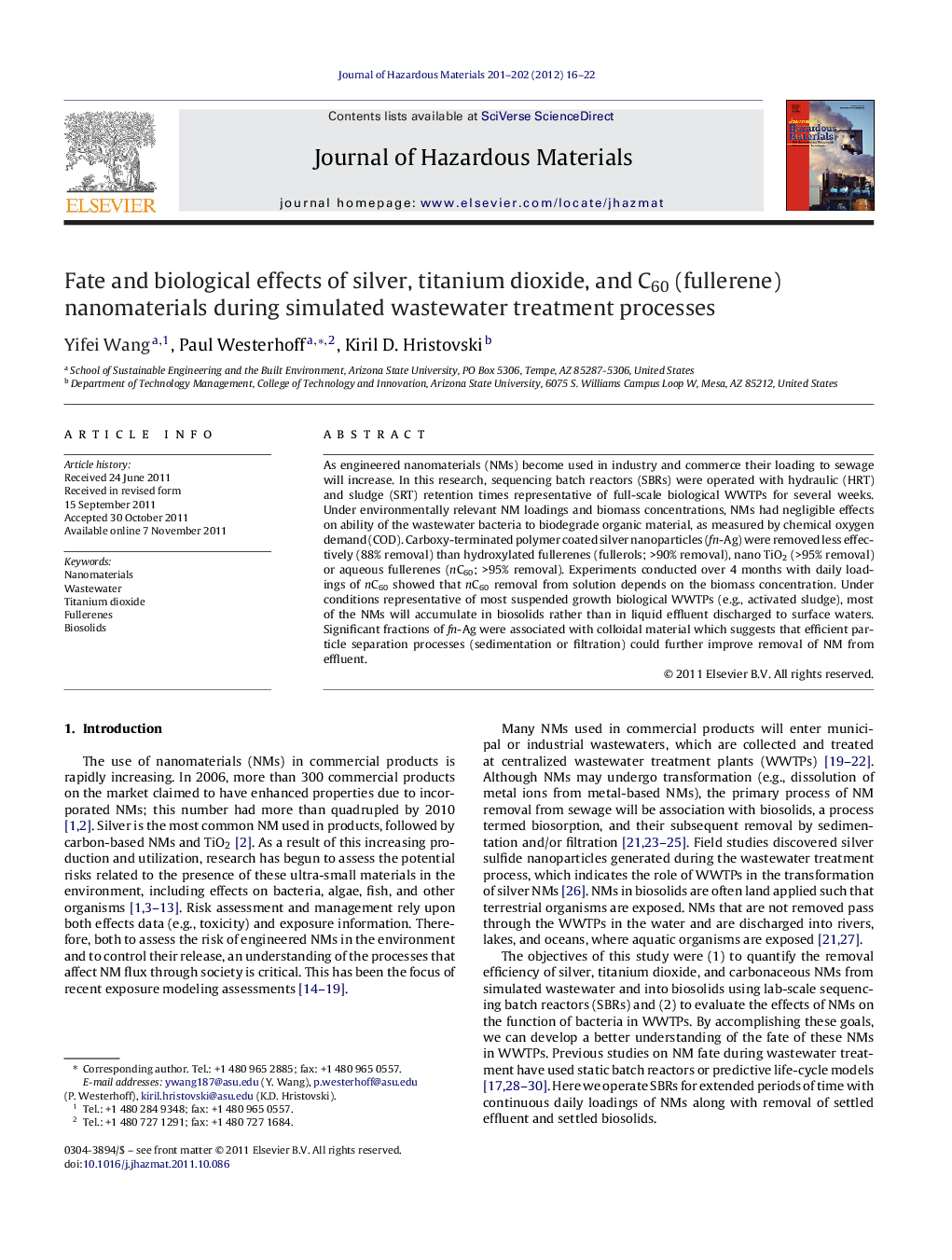| Article ID | Journal | Published Year | Pages | File Type |
|---|---|---|---|---|
| 578579 | Journal of Hazardous Materials | 2012 | 7 Pages |
Abstract
As engineered nanomaterials (NMs) become used in industry and commerce their loading to sewage will increase. In this research, sequencing batch reactors (SBRs) were operated with hydraulic (HRT) and sludge (SRT) retention times representative of full-scale biological WWTPs for several weeks. Under environmentally relevant NM loadings and biomass concentrations, NMs had negligible effects on ability of the wastewater bacteria to biodegrade organic material, as measured by chemical oxygen demand (COD). Carboxy-terminated polymer coated silver nanoparticles (fn-Ag) were removed less effectively (88% removal) than hydroxylated fullerenes (fullerols; >90% removal), nano TiO2 (>95% removal) or aqueous fullerenes (nC60; >95% removal). Experiments conducted over 4 months with daily loadings of nC60 showed that nC60 removal from solution depends on the biomass concentration. Under conditions representative of most suspended growth biological WWTPs (e.g., activated sludge), most of the NMs will accumulate in biosolids rather than in liquid effluent discharged to surface waters. Significant fractions of fn-Ag were associated with colloidal material which suggests that efficient particle separation processes (sedimentation or filtration) could further improve removal of NM from effluent.
Related Topics
Physical Sciences and Engineering
Chemical Engineering
Chemical Health and Safety
Authors
Yifei Wang, Paul Westerhoff, Kiril D. Hristovski,
